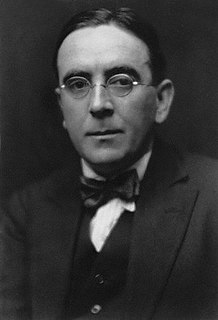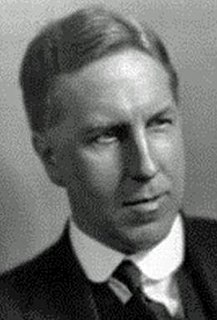Related Research Articles

John Nicholson Ireland was an English composer and teacher of music. The majority of his output consists of piano miniatures and of songs with piano. His best-known works include the short instrumental or orchestral work "The Holy Boy", a setting of the poem "Sea-Fever" by John Masefield, a formerly much-played Piano Concerto, the hymn tune Love Unknown and the choral motet "Greater Love Hath No Man".

Bergamask, bergomask, bergamesca, or bergamasca, is a dance and associated melody and chord progression.
Green Ways is a set of three short atmospheric piano works composed by John Ireland in 1937; the individual titles are The Cherry Tree, Cypress and The Palm and May. They were written when the composer was 57, and are among the last pieces he wrote for piano.

Norman Houston O'Neill was an English composer and conductor of Irish background who specialised largely in works for the theatre.

Thomas Frederick Dunhill was a prolific English composer in many genres, though he is best known today for his light music and educational piano works. His compositions include much chamber music, a song cycle, The Wind Among the Reeds, and an operetta Tantivy Towers that had a successful London run in 1931. He was also a teacher, examiner and writer on musical subjects.
Two Pieces for Piano is a work for piano solo composed in 1921 by John Ireland (1879–1962).
Three Songs is a set of songs for high voice and piano composed in 1918–19 by John Ireland (1879–1962). It consists of settings of three poems by Arthur Symons (1865–1945).
Two Songs is a set of two songs for voice and piano composed in 1920 by John Ireland (1879–1962).
Two Songs is a pair of songs for voice and piano composed in 1916 by John Ireland (1879–1962).
Two Songs is a pair of songs for voice and piano composed in 1917–18 by John Ireland (1879–1962). Both are settings of poems by Rupert Brooke (1887–1915) from his collection 1914.
Preludes for Piano is a set of four short pieces for piano solo composed by John Ireland between 1913 and 1915. They were published in the latter year.
Two Pieces for Piano is a work for piano solo composed in 1929–30 by John Ireland.
Three Pastels is a set of three pieces for piano solo composed in 1941 by John Ireland.
Ballad is a piece for piano solo composed in 1929 by John Ireland.
Decorations is a set of three pieces for piano solo composed in 1912–13 by John Ireland.
Leaves from a Child's Sketchbook is a set of three pieces for piano solo composed in 1918 by John Ireland.
London Pieces is a set of three pieces for piano solo composed in 1917–20 by John Ireland.
Sarnia: An Island Sequence is a set of three pieces for piano solo composed in 1940–41 by John Ireland.
Mai-Dun is an orchestral work composed in 1921 by John Ireland (1879–1962). He called it a symphonic rhapsody; another description might be tone poem. In 1931, he arranged it for piano four hands.
This is a summary of 1925 in music in the United Kingdom.
References
- ↑ "List of works – T to Y". The John Ireland Trust. Retrieved 2 May 2015.
- ↑ John Ireland: Pieces (2), for piano (1925) at AllMusic . Retrieved 2 May 2015.
- ↑ 2 Pieces for Pianoforte (Ireland, John) : Scores at the International Music Score Library Project
- ↑ John Ireland: April, for piano (from "Pieces (2) (1925)") at AllMusic . Retrieved 2 May 2015.
| | This article about a classical composition is a stub. You can help Wikipedia by expanding it. |